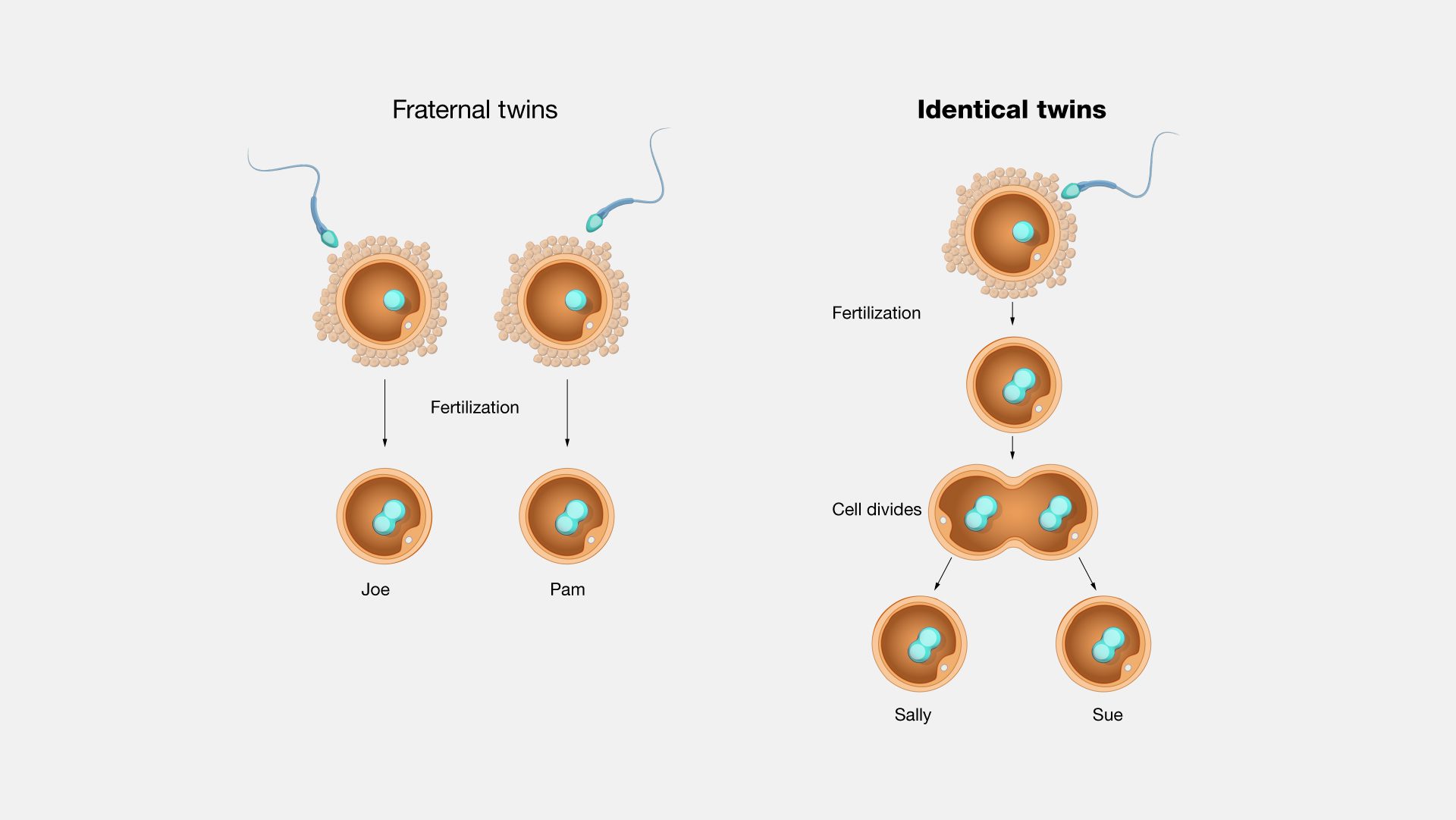Italian fashion house Gucci’s spring/summer 2023 show, Twinsburg, featured 68 sets of identical twins modeling on the runway. That impressive number of identical twins in one place got us thinking: what is the science of identical twin births?
Monozygotic twins (aka identical twins) are distinct from dizygotic twins (fraternal, or non-identical, twins). For fraternal twins, two different sperm cells fertilize two separate egg cells during one pregnancy. However, for identical twins, only one egg is fertilized. This single egg then splits, creating two (or more) embryos with the same genetic makeup.
Worldwide, four in every 1,000 births are identical twins.

Image Credit: National Human Genome Research Institute
Despite what you may think, the chances of having identical twins are not actually thought to be down to genetics at all (conversely, the chances of having fraternal twins very much can be). The UK National Health Service states that “Everyone has the same chance of having identical twins: about one in 250.”
There is an unconfirmed hypothesis that genes involved in cells sticking together are somehow involved with the formation of identical twins, which would explain why some families have a statistically unlikely number of identical twins.
A 2021 paper titled “Twin Peaks: more twinning in humans than ever before” says that increased usage of fertility treatments and people starting their families at older ages, among other factors, has contributed to the rise in twin births in recent years. The authors do note that “Most of this increase is in dizygotic twinning, although there is also evidence for a smaller increase in monozygotic twinning associated with [medically assisted reproduction].”
A 2020 paper describes the earliest reported case of identical twins: two male infants who were buried together around 31,000 years ago. One twin sadly died at birth, and the other died around 50 days later.
According to UK charity Twins Trust, “multiple pregnancies are, compared to singletons, sadly twice as likely to be stillborn and are 4.3 times more likely to result in neonatal death compared with singleton pregnancies.” They also have an increased chance of developing a disability.
Identical twins often share a placenta. However, this shared blood circulation can lead to twin-to-twin transfusion syndrome. In this condition, during pregnancy, blood flows from the “donor” twin to the “recipient” twin. This reduced blood supply results in the donor twin often being anemic and smaller than the recipient twin, whose heart can be strained by all the extra blood.
Gucci’s Twinsburg show was dedicated to Creative Director Alessandro Michele’s mother, Eralda and her identical twin, Giuliana. Inspiration for the name of their twintastic runway show may have come from the city of Twinsburg, Ohio. On the first full weekend of August, the city hosts the Twins Days Festival: “The Largest Annual Gathering Of Twins And Multiples In The World”.
Source Link: Gucci Runway Features 136 Identical Twins: How Common Are They IRL?